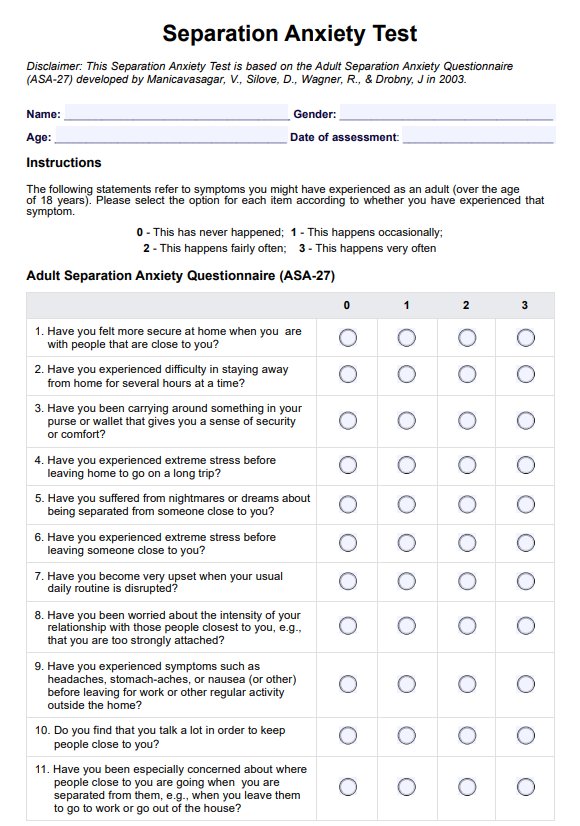Healthcare professionals diagnose separation anxiety using clinical interviews, behavioral assessments, and standardized screening tools like the Separation Anxiety Test (SAT) or the Separation Anxiety Disorder Scale (SADS). They evaluate the severity of distress, interference with daily life, and any physical symptoms triggered by separation from attachment figures.

Separation Anxiety Test
Use Carepatron's free Separation Anxiety Test PDF to effectively assess separation anxiety symptoms and behaviors in patients.
Separation Anxiety Test Template
Commonly asked questions
Common signs of separation anxiety include excessive distress when anticipating or experiencing separation, persistent worry about harm to loved ones, and refusal to be alone. Physical symptoms like headaches, stomachaches, and difficulty sleeping may also accompany emotional distress.
The most effective treatment for separation anxiety involves cognitive-behavioral therapy (CBT) to help individuals manage fears and develop coping strategies. In severe cases, healthcare providers may recommend medication, such as selective serotonin reuptake inhibitors (SSRIs), alongside therapy for comprehensive management.
EHR and practice management software
Get started for free
*No credit card required
Free
$0/usd
Unlimited clients
Telehealth
1GB of storage
Client portal text
Automated billing and online payments











